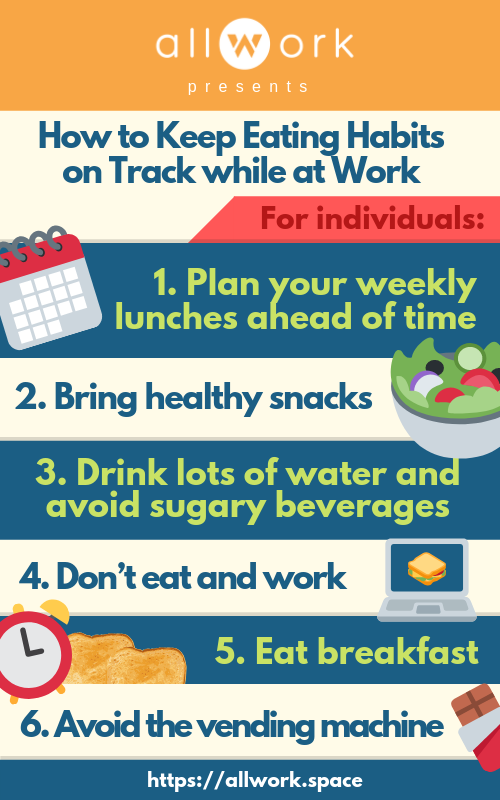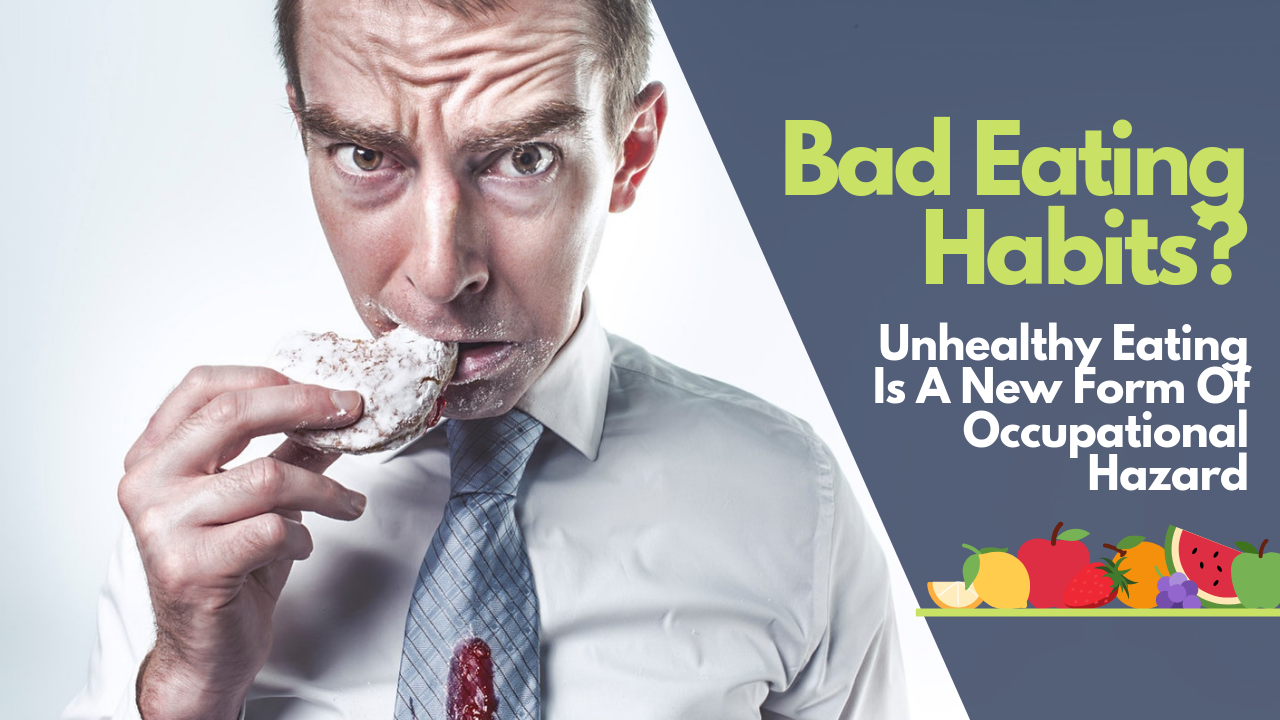- Unhealthy eating is considered a new form of occupational hazard.
- It’s difficult to resist fatty or sugary foods when they’re in the workplace, and there’s a case for workspace operators to be more mindful of the snacks they provide.
- Here are some ways to improve your workspace members’ health by changing your approach to food in the workplace.
An editorial published back in 2011 argued that unhealthy eating could legitimately be considered a new form of occupational hazard. Though the authors were referring mostly to night-shift workers, the workplace has been known to complicate our relationship with food.
The most recent Behavioral Risk Factor Surveillance System (BRFSS) data found that “adult obesity rates now exceed 35% in seven states, 30% in 29 states and 25% in 48 states.” The USDA has found that nearly 1,000 calories a day are attributed to added fats and sweeteners, while dairy, fruits and vegetables only contribute about 424 calories. And an analysis of U.S. grocery purchases revealed that highly processed foods make up more than 60% of the calories in food people buy.
At the same time, the wellness economy is growing and according to the Global Wellness Institute, the healthy eating, nutrition and weight loss sector is valued at $702 billion. This means that people are interested and care about the foods they eat or at least they’re becoming more conscious of their dietary choices.
If you search online for nutrition and dietary trends, there’s no shortage of them: intermittent fasting, the keto diet, oil-free diets, intuitive eating, healthy food delivery services, the list goes on and on. Technology is also making it easier than ever before for people to keep track of what they eat and when they eat it. It’s also making it easier for people to have access to healthy food options.
The problem then isn’t really a lack of healthy options. The problem is that it’s hard to make healthy choices when we’re surrounded by unhealthy ones. The workplace is a prime example of this.
The Relationship Between Workplace and Eating Habits
The workplace is often full of hyperpalatable foods: donuts, cookies, chips, candy, chocolate, cakes, cupcakes, etc. These are foods that are high in fat, sugar, salt, and more often than not, they are highly irresistible. Even the most disciplined of individuals is tempted to cave in and take a bite.
Food brings people together, so it’s natural that companies use food as a way to drive engagement and to foster company culture. It’s a great initiative, not only because it brings people together but because it also forces people to get up and take a break during the day (short breaks are necessary to prevent burnout and reduce stress and anxiety).
However, the constant temptation of hyperpalatable foods in the workplace makes it harder for people to make a healthy choice, especially for people that are making an effort to take care of their dietary choices and be mindful of their eating habits.
It’s easy to avoid chocolate when there’s none around. It’s a whole different story when it’s in your line of sight for a prolonged period of time or if you see others enjoying it.
Furthermore, stress complicates our relationship with food at work, known as stress eating. Research has shown that stress makes us crave tastier foods (fatty, fried, sugary) and that most people eat more when they are feeling stressed.
Why? Some psychologists argue that we stress eat in order to take control of a situation, redirecting the source of stress and achieving a feeling of comfort.
So, what can you do to un-complicate this relationship?
How to Keep Eating Habits on Track while at Work
For companies

- Banish the candy bowl and bring out a fruit bowl instead.
- If you host weekly lunches or breakfasts, don’t go for the pizza or donuts or other fatty, highly processed meals. Instead opt for healthier alternatives like deli sandwiches, a salad bar, yogurt, smoothies, etc.
- Have a fully equipped kitchen with a stove, oven, toaster, and microwave. This will encourage people to bring in their own food from home.
- If you offer free snacks, make sure the healthy snacks and beverages are more visible than the unhealthy options.
For individuals

- Plan your weekly lunches ahead of time and bring in food from home.
- Bring healthy snacks with you to the workplace.
- Drink lots of water and avoid sugary beverages. Pro tip: if you feel hungry or feel like snacking, drink some water first; more often than not our body is thirsty and not necessarily hungry.
- Don’t eat and work. Not only will your desk become full of bacteria but you’ll engage in mindless eating, which often leads to overeating.
- Eat breakfast. It can keep you fueled through the morning and make you less likely to snack during the day.
- At all costs, avoid the vending machine.


 Dr. Gleb Tsipursky – The Office Whisperer
Dr. Gleb Tsipursky – The Office Whisperer Nirit Cohen – WorkFutures
Nirit Cohen – WorkFutures Angela Howard – Culture Expert
Angela Howard – Culture Expert Drew Jones – Design & Innovation
Drew Jones – Design & Innovation Jonathan Price – CRE & Flex Expert
Jonathan Price – CRE & Flex Expert











